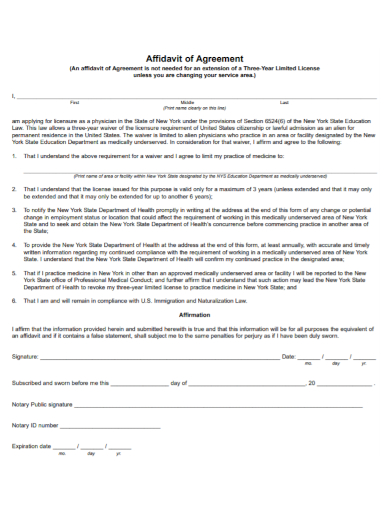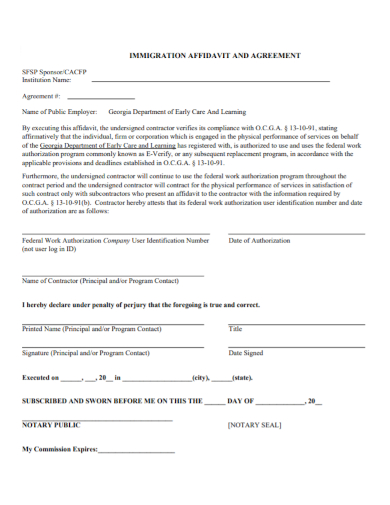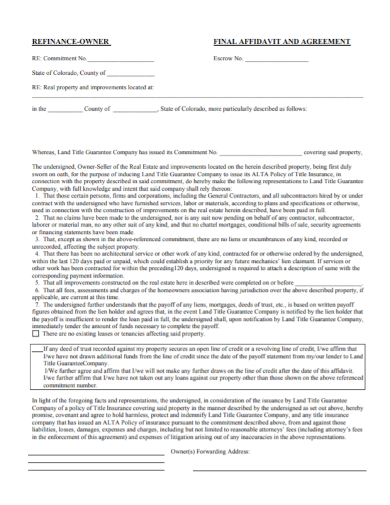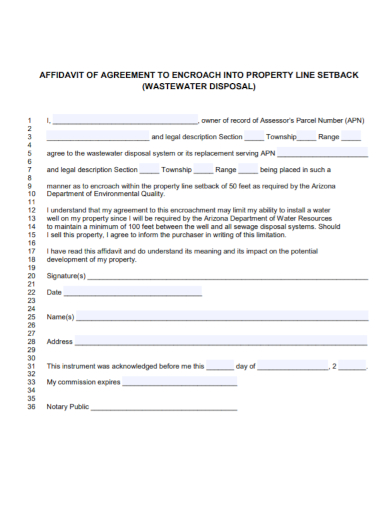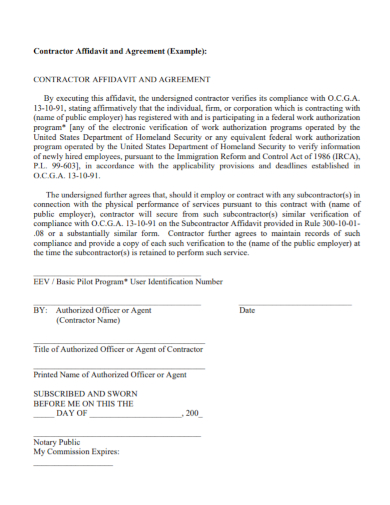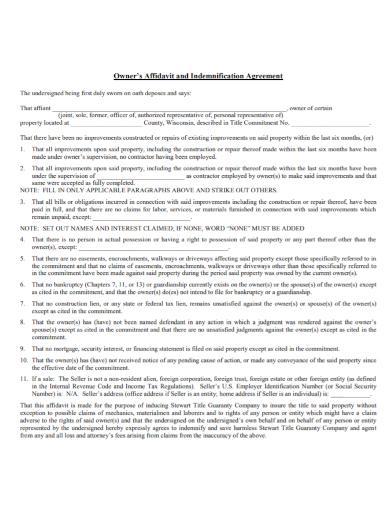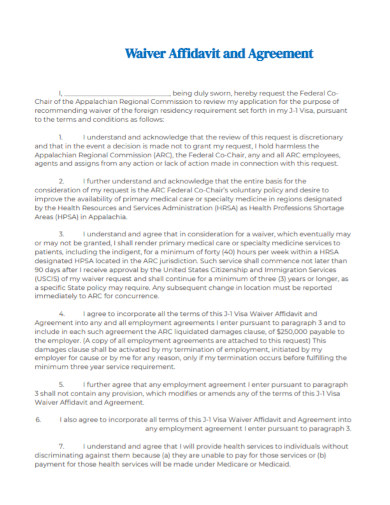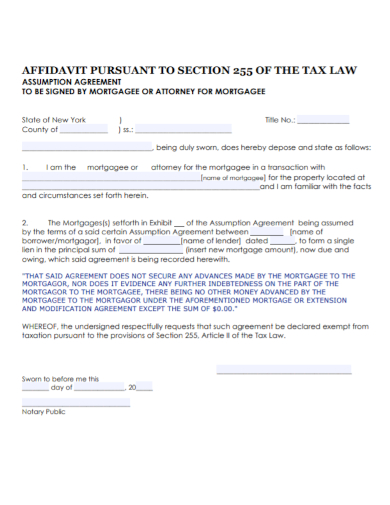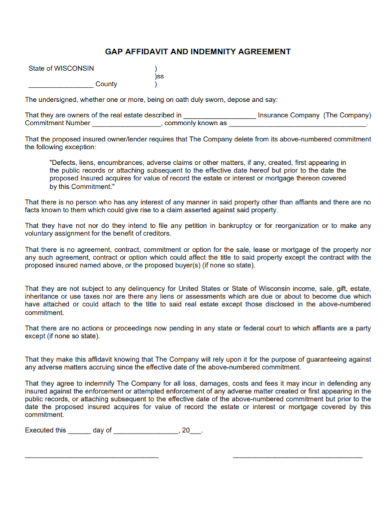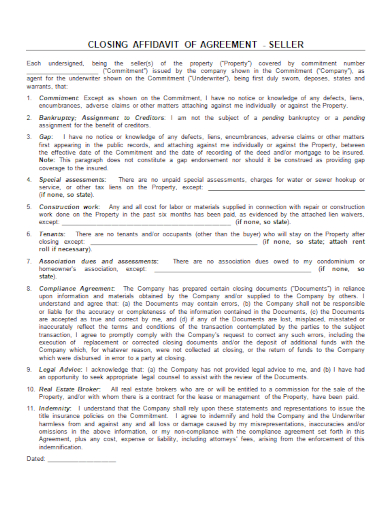A notarized affidavit agreement must be signed in the presence of a witness statement, and the person making the affidavit must take an oath that the information it contains is truthful and accurate. Before signing an affidavit, it is vitally necessary for individuals to ensure that they have carefully read and comprehended all of the information that is included in the document. When the affidavit has been signed in front of witnesses and certified by an official such as a notary public or some other authority, it has the power of law. It commits the individual to the truthfulness of the information that they have presented.
10+ Affidavit of Agreement Samples
1. Affidavit of Agreement
2. Immigration Affidavit of Agreement
3. Finance Owner Affidavit of Agreement
4. Home Equity Affidavit of Agreement
5. Affidavit of Property Agreement
6. Contractor Affidavit of Agreement
7. Owner Affidavit of Indemnification Agreement
8. Waiver Affidavit of Agreement
9. Affidavit of Mortgage Agreement
10. Gap Affidavit of Indemnity Agreement
11. Closing Affidavit of Seller Agreement
What Is an Affidavit Agreement?
When someone, such as an individual or the owner of an operating corporation, needs to utilize another person’s documents for their own reasons, a legal contract called an affidavit agreement is made. This contract is binding on both parties. You can get copies of the records from the auditor who generated them, for instance, if you need to submit evidence of your company’s financial situation in court proceedings but need the original documents because they were destroyed in a fire.
How to Make an Affidavit Agreement
The corporation must agree to relinquish its rights to any claim it may have on these documents if the other party requires them. In this approach, the interests of both parties can be safeguarded. Typically, one party in an affidavit and indemnification agreement will bear full responsibility (or hold the other party blameless) for a mistake or problem that the other party caused. Read the steps that are listed below to get started.
Step 1- Understand the Format
When drafting an affidavit, you are required to adhere to a specific set of regulations about the document’s format. The paper needs to be divided into sections, and each paragraph should be numbered. In addition, paragraphs should be as clear and concise as is reasonably possible; therefore, aim to keep sentences as brief and to the point as is reasonably possible. Stay away from excessively long phrases and superfluous remarks.
Step 2- Organize Your Thoughts
It is best to take some time before producing the document to organize your thoughts. This will allow you to ensure that your affidavit has all the pertinent facts in the most straightforward manner possible. Create a comprehensive outline of the specifics you intend to mention in your paper. Make sure that no aspect, no matter how minute, is overlooked by taking extra precautions to cover all bases. Bear in mind that your affidavit will be utilized in court proceedings and that it is required to be as specific and detailed as is humanly possible.
Step 3- State the Facts
Provide the court with the information that you wish to provide to them. Be certain that this section is as descriptive as is humanly possible and uses up as much space as is required. There is no requirement for the length of this section; however, you must ensure that all important data are included and everything is included. There is no requirement regarding the length of this section.
Step 4- Review and Revise
Affidavit agreements should not contain any bad language or slang, grammatical errors, or spelling problems, and they should be free of any grammatical or spelling errors. Spend some time reviewing the text to check for errors and ensure a concise description of the facts. In some situations, disentangling one’s feelings from one’s knowledge of the facts might be challenging, yet doing so is essential when creating legal documents. Perform any necessary edits until you have a complete draft.
FAQs
In the context of legal forms, what exactly is an affidavit?
An affidavit is a formal written declaration of facts that is voluntarily made by an affiant under an oath or by a public authority such as the notary public or another person authorized to do so. An affidavit can be used in legal proceedings. In court, it will be used as evidence to demonstrate that a certain statement was truthful.
Is an affidavit a legal document?
An affidavit is a declaration that a person makes under oath that is legally enforceable and cannot be contradicted.
What kinds of things should you not put in an affidavit?
It is improper for an affidavit to include information that was provided by a third party unless the third party is also a party to the legal proceeding.
An affidavit is used to legitimize a claim, which is its primary function formally. In a legal dispute, these legal documents are typically utilized together with witness statements or other related evidence.
Related Posts
FREE 11+ Personal Guarantee Samples
FREE 11+ Sample Sworn Statement
FREE 10+ Affidavit of Support Samples
FREE 10+ Affidavit Surviving Spouse Samples
FREE 10+ Affidavit Of Social Security Samples
FREE 9+ Sample Affidavit
FREE 9+ Affidavit Samples
FREE 8+ Divorce Certificate Samples
FREE 7+ Sample Blank Affidavit Forms
FREE 12+ Sample Affidavit of Support Letter
FREE 10+ Sponsored Research Agreement Samples
FREE 8+ Sample Child Support Agreement
FREE 8+ Sample Bill of Sale For Gun
FREE 7+ Sample Franchise Agreement Forms
FREE 7+ Sample Divorce Forms

